The world is more connected than ever before. This connection comes with the need to understand different cultures. Chinese video content, from movies to TV series, is becoming increasingly popular worldwide. But to truly enjoy, translating video Chinese to English is essential.
In this guide, you'll learn how to effectively translate Chinese video into English. We'll cover the best tools, including AI-powered software like Wondershare Filmora. We’ll share tips on maintaining the video's original message and cultural context.
Let's dive in and discover the world of video translation. After the importance of translating Chinese videos, let's explore what video translation entails.
In this article
Part 1: Understanding Video Translation
What is Video Translation?
Video translation is transforming spoken words in a video into another language. This can be accomplished through dubbing, which replaces the original audio with fresh audio in the target language, or subtitling, in which the translated text shows on the screen.
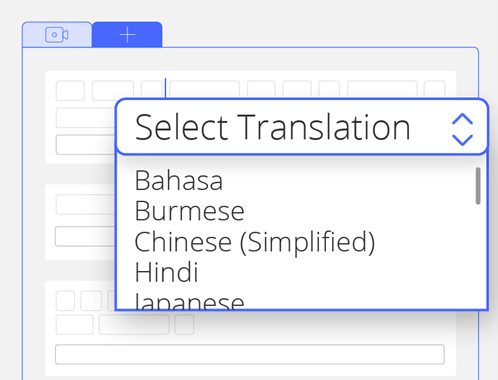
Consider the number of Chinese dramas or films you have seen lately. Shows like "The Untamed" and films like "Crouching Tiger, Hidden Dragon" have enthralled a worldwide audience.
Nevertheless, their allure and nuance may be lost in translation. English translation improves the watching experience while also making it more accessible.
The Importance of Accurate Translation
Accurate translation is vital in maintaining the integrity of the original content. It's not just about converting words—it's about preserving the tone, message, and cultural nuances. A well-translated video can bridge cultural gaps, while a poorly translated one can lead to misunderstandings and a loss of meaning.
After understanding video translation, let's explore the tools and software that can help us translate.
Part 2: Tools and Software for Translating Chinese Videos to English
AI and Machine Learning Tools
AI and machine learning have revolutionized video translation. These tools offer quick, efficient, and increasingly accurate translations.
- Automated Translation: AI tools use machine learning to translate videos quickly. This saves time compared to manual methods.
- Accuracy Improvements: These tools learn and improve over time. This leads to better accuracy in translations.
- Contextual Understanding: AI can grasp the context in conversations. This helps in producing more natural translations.
- Real-Time Translation: Some AI tools offer real-time translation. This is useful for live streaming or immediate content delivery.
- Customizable Outputs: AI tools often allow customization of translation results. This lets you fine-tune the output to match your needs.
- Accessible Interfaces: Many AI translation tools are designed to be easy to use. This makes them accessible even to beginners.
- Cost-Effective: AI tools can be more affordable than hiring professional translators. They are a budget-friendly option for many users.
- Integration with Editing Software: AI tools often integrate well with video editing software like Filmora. It streamlines the workflow from translation to editing.
- Language Support: These tools support multiple languages. This makes them versatile for translating content into various languages.
- Continuous Updates: AI tools frequently receive updates. This ensures they stay current with language trends and technological advancements.
Wondershare Filmora: AI-Powered Translation Tool
Filmora is a versatile video editing software that also offers an AI video translator. Here are some of the standout features:
Key Features of AI Video Translation in Filmora
- Voice Cloning: Filmora video translator utilizes advanced and cutting-edge cloning technology that's essential in replicating your unique voice into another language and keeping the natural appeal and timbre of your voice.
- Lip Sync: This feature allows you to accurately translate the voice and text of a video. You can choose to automatically translate Chinese Video to English, and the software will sync the voice and subtitles to match the original content’s timing.
- Subtitle Editor: After your video is translated, Filmora allows you to easily fine-tune the subtitles, edit the style of the text, or even add additional audio tracks.
- Multi-language Support: Another key feature of Filmora is its support for over 20 languages, including Arabic, Spanish, and Hindi, with an accuracy rate of over 95%. Therefore, whether you're translating from Chinese to English or any other language, this tool can handle it.
- Audio translation: Do you want to translate audio files? Filmora’s AI translation feature accurately translates text and ensures smooth playback.
Step-by-Step Guide to Translating Chinese Videos into English Using Filmora
Step 1. Install and Open Filmora
Download and install Wondershare Filmora. Open the software and start a new project.
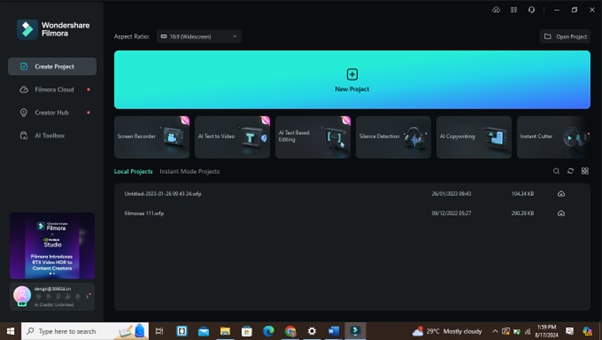
Step 2. Import Your Video
Click the ‘Import’ button to add the Chinese video you want to translate.
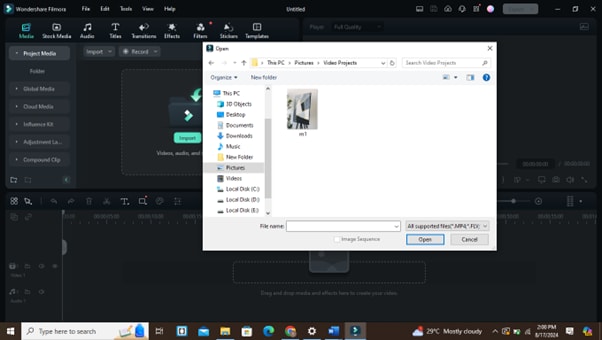
Step 3. Add to Timeline
Drag the video from the media library to the timeline below.
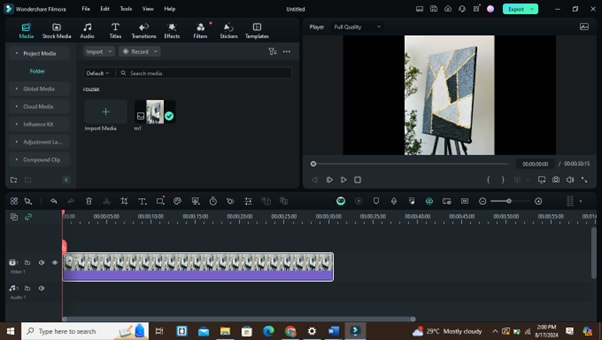
Step 4. Enable AI Translation
Go to the ‘Text and Titles’ menu and select ‘Subtitles.’ Choose ‘AI Translate’ and set the source language to Chinese and the target language to English.
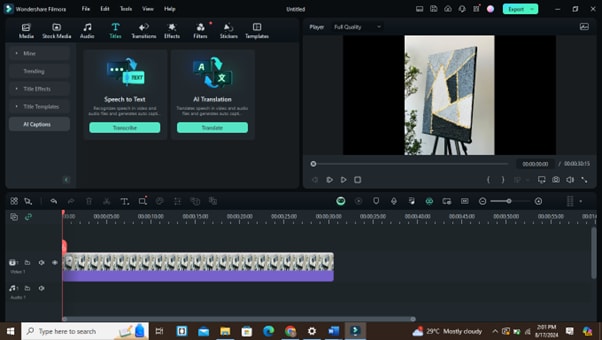
Step 5. Adjust Subtitles
Review the auto-generated subtitles. Use the editing tools to adjust timing, font, and positioning.
Step 6. Preview and Edit
Play the video to ensure the subtitles match the spoken content accurately. Make any necessary adjustments.
Step 7. Export the Translated Video
Once satisfied with the translation, click ‘Export.’ Choose the desired format and save the video to your device.
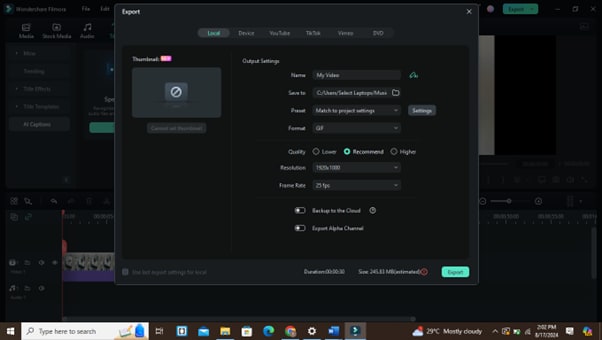
Benefits of Using AI Translation in Filmora
Here’s why Filmora stands out as an AI translation tool:
- Time-Saving
AI handles the bulk of the work, reducing translation time significantly.
- Accuracy
Filmora's AI technology is designed to provide contextually accurate translations.
- Ease of Use
With its simple interface, even beginners can produce professional-quality translations.
- Flexibility
The tool allows for easy translation adjustments, ensuring they align with the original video's intent.
Who Benefits Most from AI Translation in Filmora?
- Content Creators
Content creators can quickly translate their videos into English. This makes their content accessible to a global audience.
- Educators
Teachers can translate instructional videos from Chinese to English. This helps reach more students who may not understand Chinese.
- Businesses
Companies can use Filmora to translate marketing videos. This helps them expand into English-speaking markets.
- Social Media Influencers
Influencers can translate their content to reach a broader audience. This increases their follower base internationally.
- Language Learners
Language learners can watch translated videos to improve their skills. It helps them learn while enjoying content.
Top Translation Software
Apart from Filmora, other tools can assist in translating Chinese videos into English:
- Google Translate
Ideal for quick text translation, though not specialized for videos.

- DeepL
Known for its accuracy, especially with complex sentences and idiomatic expressions.

- Subtitle Translator Pro- ChatGPT
A specialized tool for translating and syncing subtitles in video files.

Manual Translation Tools
For those who prefer a hands-on approach, manual translation tools can be invaluable:
- Professional Translation Services
Agencies like Gengo and TransPerfect offer high-accuracy translations. They are ideal for complex video content.
- Freelancers
Platforms like Upwork and Fiverr connect you with skilled translators. They provide personalized translation services.
- Subtitling Software
Tools like Subtitle Edit allow you to manually translate and sync subtitles. It gives you full control over the translation process.
- Language Experts
Hiring a language expert ensures cultural accuracy. This is crucial for videos with nuanced content.
- Crowdsourced Translation
Some platforms allow you to use community-driven translation. This is a cost-effective method but may require quality checks.
Comparison of Translation Methods
| Method | Pros | Cons |
| AI Translation (Filmora) | Fast, accurate, easy to use, and affordable. | It may require manual adjustments for complex translations. |
| Manual Translation | High accuracy, maintains cultural nuances, ideal for complex content. | Time-consuming and expensive compared to AI tools. |
| Hybrid Approach | Combines the speed of AI with the accuracy of human translation. | More costly than AI alone but provides better quality. |
After exploring the various tools, let’s consider some additional factors when choosing the right translation tool
Part 3: Additional Considerations When Choosing a Translation Tool
- Cultural Sensitivity
Ensure the tool can handle cultural nuances. This is crucial for preserving the original tone and context of the content.
- Language Complexity
Choose a tool that accurately translates idiomatic expressions, and technical jargon. This is vital for delivering precise translations.
- Budget
Evaluate the tool's cost and compare it to your budget. It's important to find a balance between affordability and the quality of the translation provided.
- Ease of Use
Opt for a translation tool with an accessible interface. This simplifies the process, especially for newcomers to video translation.
- Support and Updates
Consider whether the tool offers customer support and receives regular updates. This ensures the tool remains reliable and adapts to changing translation needs.
- Customization Options
Look for tools that allow you to customize translations. They can adjust subtitle timing or modify translation accuracy. This flexibility can be necessary for tailoring content to specific audiences.
- Integration with Other Software
Check if the translation tool can integrate with other video editing or subtitling software. This can streamline your workflow and make the process more efficient.
- Output Formats
Ensure the tool supports various output formats that meet your needs. It can be for social media, streaming, or other distribution channels.
- Speed of Translation
Consider the time it takes for the tool to complete translations. A faster tool could be more beneficial if you work on tight deadlines.
- Security and Privacy
Verify that the tool protects your data, especially when working with sensitive content. Security features should be a priority in your selection process.
Let's share some final thoughts considering the factors in choosing a translation tool.
Conclusion
Translating Chinese videos into English is more than just a technical task. It is bridging cultural gaps and making content accessible to a global audience. The goal is to preserve the original message and cultural context.
Wondershare Filmora is an excellent choice for those looking for professional-quality translations. Its AI-powered features make the translation process straightforward. It allows you to focus on the creative aspects of your project.
To round off this guide, here are some frequently asked questions that might help clarify your doubts.



